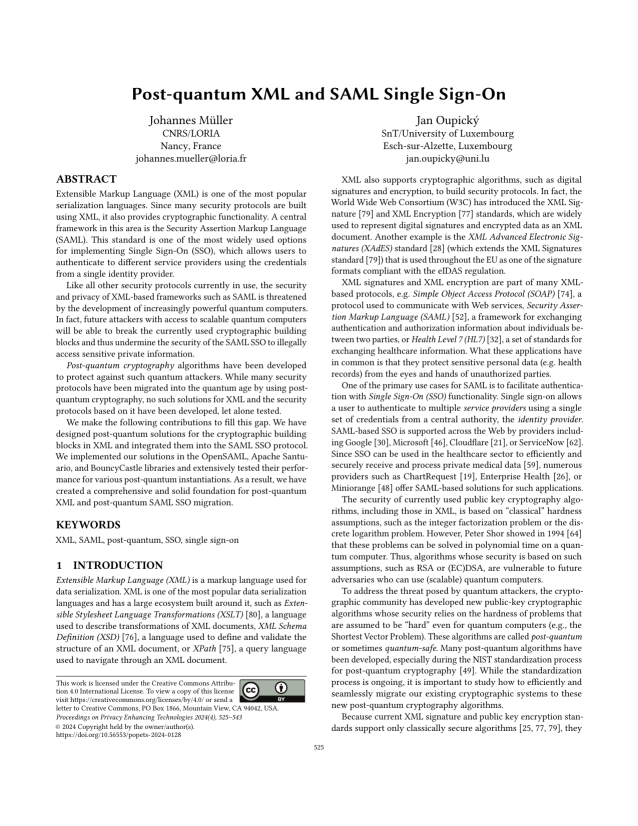Post-quantum XML and SAML Single Sign-On
Authors: Johannes Müller (CNRS/LORIA), Jan Oupický (SnT/University of Luxembourg)
Volume: 2024
Issue: 4
Pages: 525–543
DOI: https://doi.org/10.56553/popets-2024-0128
Abstract: Extensible Markup Language (XML) is one of the most popular serialization languages. Since many security protocols are built using XML, it also provides cryptographic functionality. A central framework in this area is the Security Assertion Markup Language (SAML). This standard is one of the most widely used options for implementing Single Sign-On (SSO), which allows users to authenticate to different service providers using the credentials from a single identity provider. Like all other security protocols currently in use, the security and privacy of XML-based frameworks such as SAML is threatened by the development of increasingly powerful quantum computers. In fact, future attackers with access to scalable quantum computers will be able to break the currently used cryptographic building blocks and thus undermine the security of the SAML SSO to illegally access sensitive private information. Post-quantum cryptography algorithms have been developed to protect against such quantum attackers. While many security protocols have been migrated into the quantum age by using post-quantum cryptography, no such solutions for XML and the security protocols based on it have been developed, let alone tested. We make the following contributions to fill this gap. We have designed post-quantum solutions for the cryptographic building blocks in XML and integrated them into the SAML SSO protocol. We implemented our solutions in the OpenSAML, Apache Santuario, and BouncyCastle libraries and extensively tested their performance for various post-quantum instantiations. As a result, we have created a comprehensive and solid foundation for post-quantum XML and post-quantum SAML SSO migration.
Keywords: XML, SAML, post-quantum, SSO, single sign-on
Copyright in PoPETs articles are held by their authors. This article is published under a Creative Commons Attribution 4.0 license.

